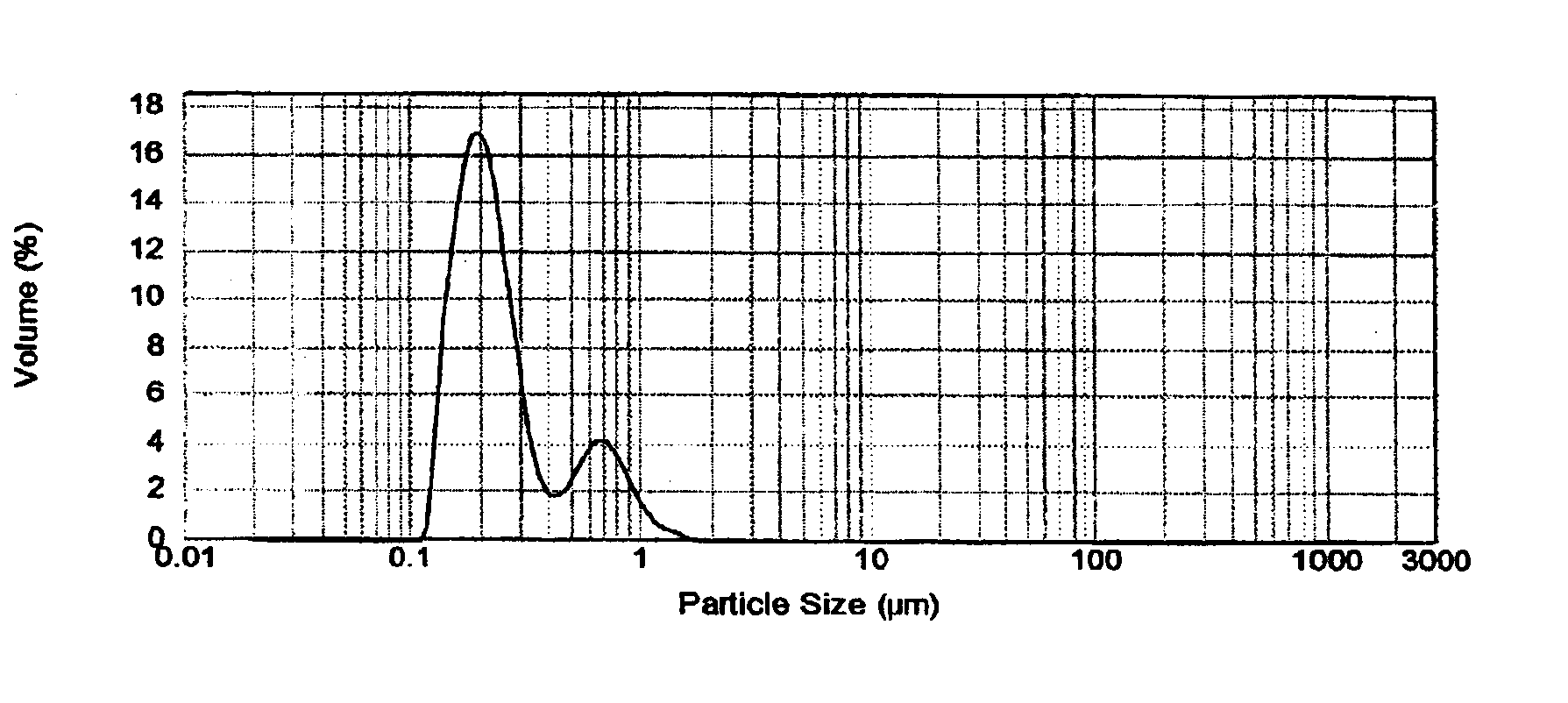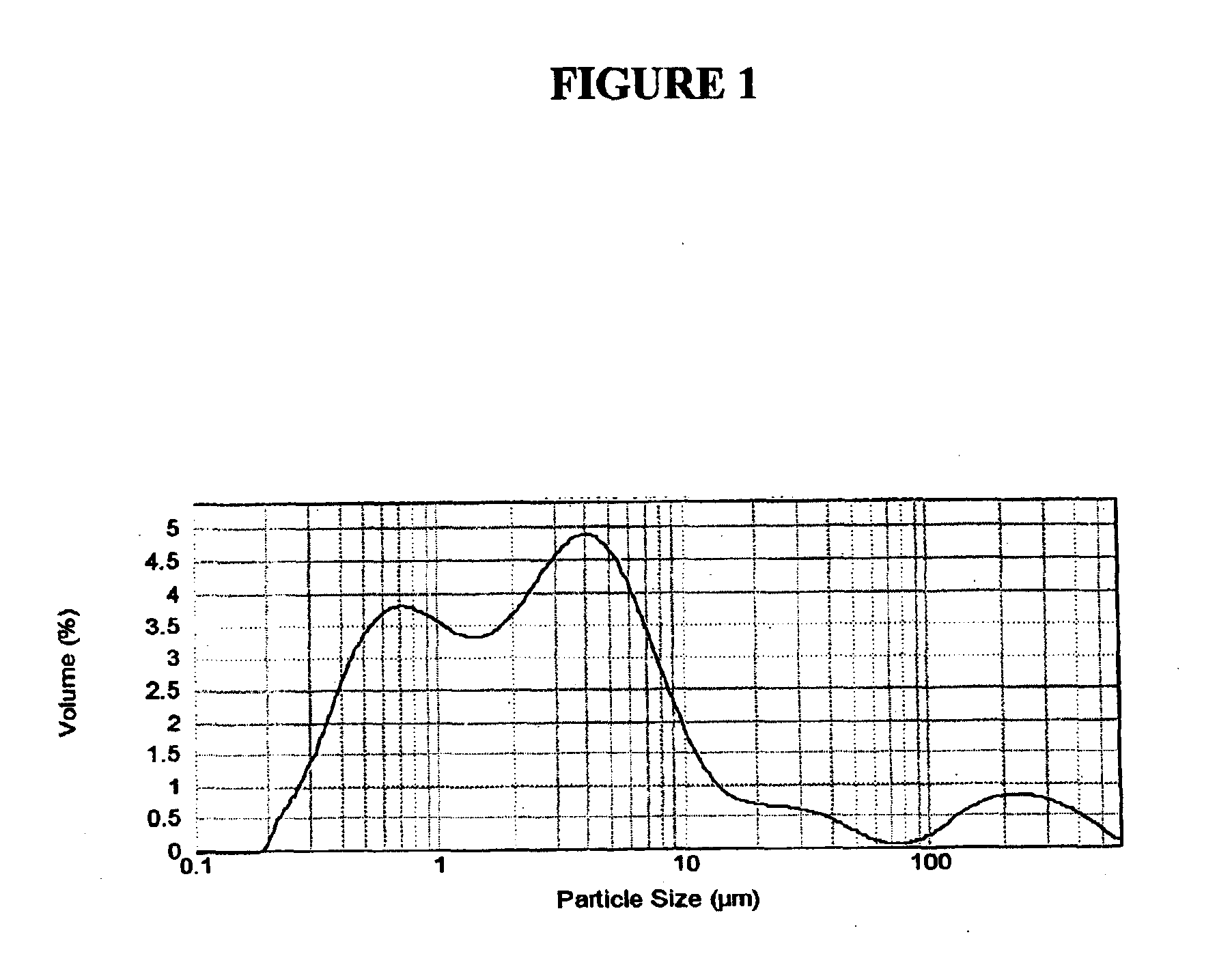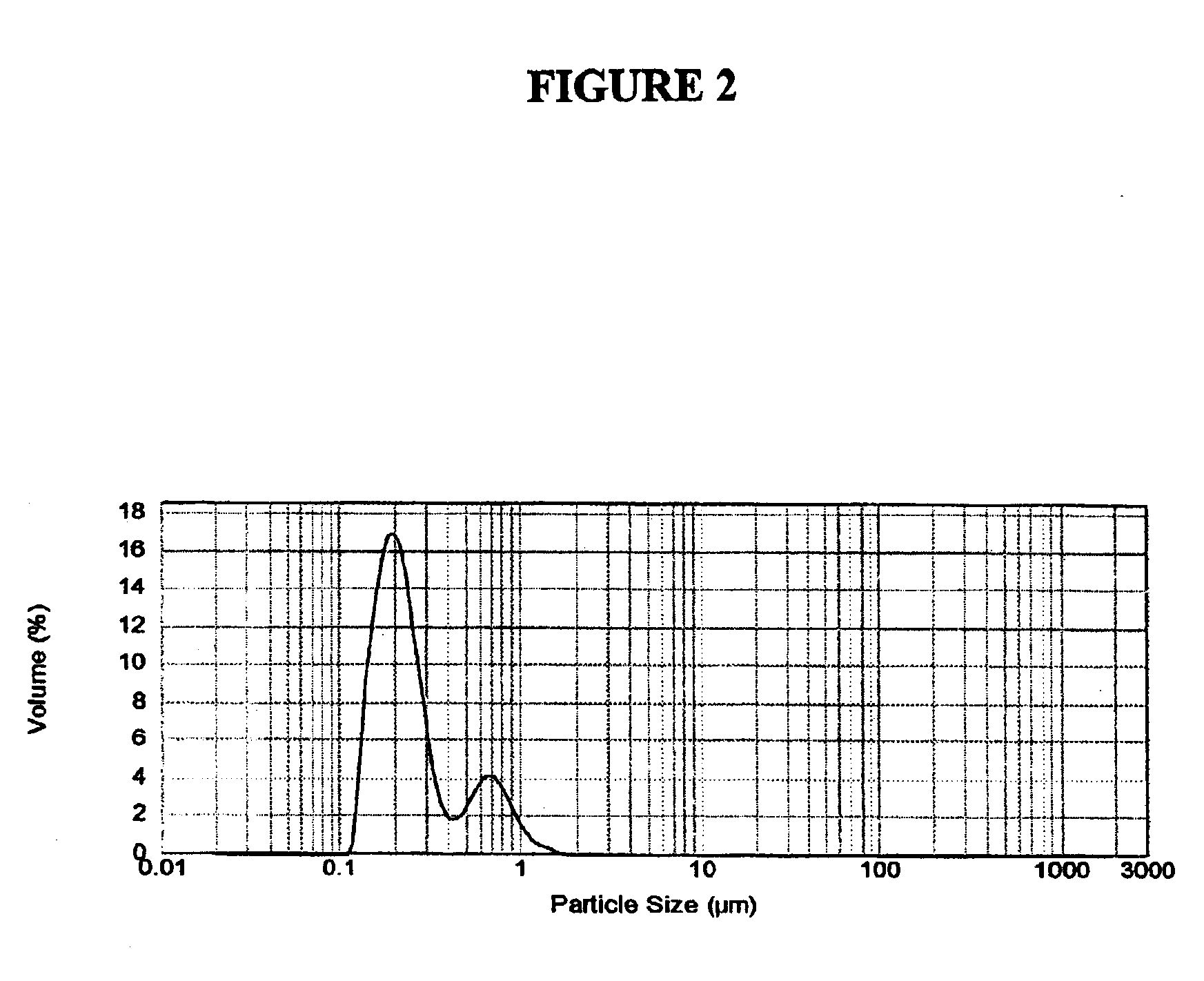Methods for producing submicron polytetrafluoroethylene powder and products thereof
a polytetrafluoroethylene and submicron technology, applied in the field of methods for producing submicron polytetrafluoroethylene powder, can solve the problems of smearing, submicron ptfe dispersions are characteristically unstable, commercially available fine powder ptfe products have been known to exhibit significant stickiness and fibrillation, etc., to achieve the effect of not releasing dust into the air upon handling and being easy to dispers
- Summary
- Abstract
- Description
- Claims
- Application Information
AI Technical Summary
Benefits of technology
Problems solved by technology
Method used
Image
Examples
example 1
Preparation and Particle Size Measurement of Submicron PTFE Powder; Solvent: IPA
[0107]In the present Example, submicron PTFE powder was formed according to the following procedure: First, a solvent concentrate of submicron PTFE particles in IPA was prepared. Specifically, 25% by weight of Daikin F104 fine powder PTFE starting material (that had been irradiated at 28 megarads) was mixed with 75% by weight IPA. The irradiated PTFE starting material was gently added to the IPA while mixing using a high-speed mixer. Subsequently, the mixture of the PTFE starting material and IPA was ground using a horizontal media mill. The horizontal media mill employed in this Example used beads measuring from about 0.6 mm to about 0.8 mm in diameter, and the grinding took place at 3500 RPM. To prevent the PTFE particles from settling, this “pre-dispersion” of the PTFE starting material and the IPA solvent was consistently mixed until the first pass of grinding was complete.
[0108]After 5 passes of gri...
example 2
Preparation and Particle Size Measurement of Submicron PTFE Powder; Solvent: Water / IPA
[0111]In the present Example, the exact same procedures described in Example 1 above were carried out; however, the solvent used for grinding consisted of 25% by weight tap water and 50% by weight IPA, while the amount of irradiated PTFE starting material used remained at 25% by weight. The resulting dry PTFE powder was then dispersed in IPA as the chosen dispersant. Particle size analysis was performed (using the method described in detail above wherein samples of submicron PTFE powder are dispersed in IPA), and it was determined that 100.00% of the PTFE particles were less than 1.00 μm in size. The particle size distribution graph for the present Example is shown as FIG. 5.
example 3
Preparation and Particle Size Measurement of Submicron PTFE Powder; Solvent: Butyl Carbitol
[0112]In this Example, the same procedures described in Example 1 above were followed, except that the solvent used for grinding was butyl carbitol rather than IPA. Thus, the starting mixture of irradiated PTFE starting material in the solvent comprised 25% by weight irradiated PTFE starting material and 75% by weight butyl carbitol.
[0113]Particle size analysis was first performed on the dry PTFE powder produced in this Example (before it was subsequently dispersed into a liquid for the particles to become submicron size), and FIG. 6 shows the results of the particle size analysis of the dry PTFE powder of this Example. The particle size analysis results depicted in FIG. 6 were obtained using the method and Standard Operating Procedure for measuring the particle size of samples of dry PTFE powder (outlined in detail above), and the percentage of the PTFE particles below 1.00 μm in size was fou...
PUM
| Property | Measurement | Unit |
|---|---|---|
| size | aaaaa | aaaaa |
| size | aaaaa | aaaaa |
| particle size | aaaaa | aaaaa |
Abstract
Description
Claims
Application Information
 Login to View More
Login to View More - R&D
- Intellectual Property
- Life Sciences
- Materials
- Tech Scout
- Unparalleled Data Quality
- Higher Quality Content
- 60% Fewer Hallucinations
Browse by: Latest US Patents, China's latest patents, Technical Efficacy Thesaurus, Application Domain, Technology Topic, Popular Technical Reports.
© 2025 PatSnap. All rights reserved.Legal|Privacy policy|Modern Slavery Act Transparency Statement|Sitemap|About US| Contact US: help@patsnap.com



